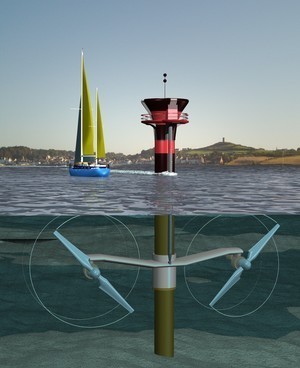Tidal Energy
Tidal energy is energy that can be obtained from the changing sea levels. In other words, tidal energy is a direct result of tide shifting from low to high.
Tidal energy is considered a renewable source of energy since it only uses the energy from tide changes instead of burning or consuming any form of energy source. It is also considered inexhaustible because tides always rise and fall due to gravity.
Tidal power utilization is also considered a very reliable source of energy due to its predictability. Compared to other energy sources such as wind or solar energy, tidal changes are easier to predict. They also occur consistently. Unlike solar or wind energy, tidal power does not depend on the season or the weather type. Instead, tidal energy relies purely on the orbital kinetic energy that the sun exerts as the earth orbits around it. The same goes for the moon and earth orbital system. As the moon orbits around the earth, both sides experience a gravitational force.
Consequently, all of the forces that work within the orbital systems create an imbalance in the earth’s water levels. Thus, some places have high water levels while others have decreased water levels.
How Tidal Energy Works
Water can be trapped or held within specially made structures during high tide. A water containment reservoir called a tidal lagoon is constructed. The lagoon is filled with water as the tide goes up the reservoir.
As the tide shifts from high to low, there is a difference in pressure between the water in the higher containment structure and that in the open water source. This will form a head pressure (also known as hydrostatic pressure) on the containment structure. The difference in water levels between the open water source and the contained water will result in potential energy, which can be utilized when the contained water is released.
When the natural body of water (water outside the containment) reaches a very low level due to the low tide, the water inside the reservoir is released via specially made outlets that are usually equipped with turbines. The force of the rushing water spins the turbines that in turn power generators that produce electricity.
Potential energy increases as height is increased. An object stores more energy as it goes higher. This potential energy is released and then converted into electricity through the use of proper devices and modern technology. Therefore, tidal energy is most effective and economical to produce if water levels between tides are significant.
Benefits of Tidal Energy
The key benefit of tidal power is that once constructed, it is free. It does not generate any unsafe greenhouse gases or hazardous waste. It functions without any fuel requirement, only with natural tidal energy. It is a consistent source of electricity with very little maintenance cost. Offshore turbines and vertical axis turbines are economical to construct and do not have a big ecological effect.
Limitations of Tidal Energy
Tidal energy can only be harnessed in places with significant water level changes. The conversion of the potential energy that the tides will hold shows figures of approximately 80%. This means that 20% of the total potential energy is usually lost and only 80% is typically utilized for electricity generation.


Comments - 12 Responses to “Tidal Energy”
Sorry but comments are closed at this time.